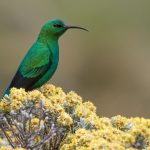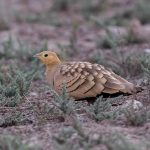
On the one hand, owls are a traditional symbol of wisdom – and with their big staring eyes, they indeed look intelligent and thoughtful. On the other hand, I have heard some bird guides describe owls as “really quite dumb” – which hurt me a bit, given that I rather like them. So, what is the truth?
It turns out owls are indeed nothing special with regard to their brain size or intellectual capacity, particularly compared to species known for their intelligence, such as crows and parrots. Their brain size is bigger than that of hawks and falcons (source). But that does not necessarily indicate wisdom. Large parts of owl brains are dealing with visual acuity rather than with reasoning, rather like Lightroom hogging more resources on my laptop than Excel (ok, flawed comparison).
Then again, as one of my ex-bosses stated whenever we considered putting out a somewhat flawed product in the market, “Is it good enough?” And at least for owls, the answer is yes – the intelligence they have is enough to efficiently hunt their prey even at night and to survive. Owls are mostly solitary, so many of the social activities that apparently require intelligence (even though social media does not exactly prove this point) are not relevant to them, reducing the need for intelligence.
Still, the question remains why owls were ever considered to be wise in the first place. In classical Greece, owls (specifically, the Little Owl) were the symbol of Athena, the goddess of wisdom. In turn, most likely this is because the owl’s ability to move in the dark without bumping into things was equated with wisdom.
In medieval times, owls took on a more sinister meaning and an indication of prevailing antisemitism: “Owls, who are day-blind and live in darkness, were used to represent Jews in medieval England, who were said to have rejected the light of Christ and live in the uncleanliness of religious blasphemy” (source). Another common association was with witchcraft.
In the modern Western world, owls got back their (unjustified) association with wisdom. Examples include Hedwig in Harry Potter, owls as wise creatures in many children’s books, the logos of academic institutions and libraries featuring owls, and even the Tripadvisor logo (no, they did not pay me for including this, unfortunately).
I would like to add one more interesting finding, even though it is only very loosely linked to the topic of this post. Researchers compared the brain size of birds captured by pygmy owls – and within the same species, birds with smaller brains were caught earlier in the season and at higher frequency than those with larger brains.
Cover Photo: Little Owl in Dulan, Qinghai, China













Wisdom and intelligence may not be the same, but I just can’t seem to come up with an example….